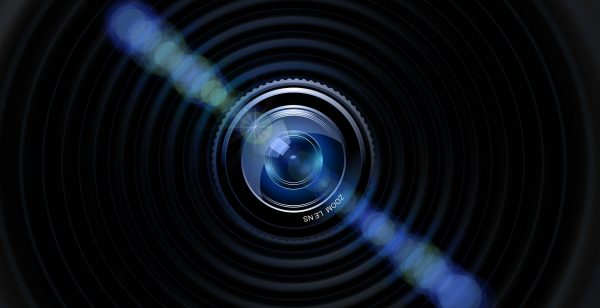Wie Sie das Aufflackern der Linse eliminieren können.
Es ist erstaunlich, wie die kleinsten Dinge einen so massiven Einfluss auf ein Foto haben können (sowohl positiv als auch negativ).

Eine solche kleine Sache, die ein Bild sowohl verbessern als auch beeinträchtigen kann, ist der sogenannte „Sunspot“ oder „Sonnenflecken“. Schießen Sie an einem sonnigen Tag in die Sonne (oder in helle Lichter) können Sie davon ausgehen, dass Sie auch in ihren Bildern auftreten werden.
Gut positioniert und im richtigen Fotoformat können Sie der Aufnahme tatsächlich etwas hinzufügen – was ihr Paparazzi-Feeling verleiht (tatsächlich helfen ihnen einige Bildbearbeitungsprogramme, Sunspots hinzuzufügen, um dieses Gefühl zu erzeugen).
Doch in vielen Fällen können Sonnenflecke und Streulicht ein störendes Element sein – ein Problem, das eine ansonsten grpßartige Aufnahme fast ruiniert. Natürlich können Sie versuchen, sie später zu bearbeiten, aber es ist wahrscheinlich am besten, sie zu eliminieren, bevor sie entstehen. Hier finden Sie ein paar Techniken, die Abhilfe bieten:
Streulichtblenden.
Die meisten Profis verwenden speziell angefertigte Streulichtblenden auf ihrem DSLR-Objektiv, um das Problem in den Griff zu bekommen. Die meisten DSLRs und Prosumer Digitalkameras bieten heute die Möglichkeit, Streulichtblenden anzubringen. Diese Hauben wurden speziell entwickelt, um Sonnenflecke zu überwinden und gleichzeitig so viel Licht wie möglich in die Linse zu lassen. Sie sind in allen Formaten und Größen erhältlich, welche nach Objektivdesign, Brennweite, Zoom etc variieren können. Der Hauptnachteil der Streulichtblenden ist, dass sie Nachteile beim Transport haben, aber sie sind ansonsten recht effektiv und bereichern ihre Shootings.
Helfen Sie ihrer Linse.
Wenn Sie keine Streulichtblende haben (oder ihre Kamera keine aufnehmen kann), dann verwenden Sie ihre Hand, um ihr Objekt von der Sonne zu schützen. Achten Sie nur darauf, dass Sie es nicht in die Ecke ihres Bildes legen, wenn Sie mit einer Weitwinkelbrennweite fotografieren – besonders wenn Sie durch einen Viewfinder fotografieren, der sich nicht auf einer Spiegelreflexkamera befindet (wobei das, was Sie durch den Viewfinder sehen, leicht von dem abweicht, was Sie im eigentlichen Bild sehen).
Zoomen.
Wenn Sie keinen Zugang zu einer Streulichtblende haben und eine Kamera mit einem Zoomobjektiv verwenden, können Sie feststellen, dass das Verschieben des Zooms auf eine andere Brennweite den Einfluss von Sonnenflecken verringern kann. Es könnte sie nicht vollständig entfernen, aber den Aufprall verringern und/oder die Position von ihnen zu einer weniger störenden Stelle im Bild verändern.
Positionieren Sie sich neu.
Eine der effektivsten Möglichkeiten zur Reduzierung von Streulicht ist es, sich in eine neue Aufnahmeposition zu bewegen – entweder, damit Sie nicht so direkt in die Sonne schießen, oder damit ihr Objektiv von einem anderen Objekt der Sonne oder der Hauptlichtquelle abgeschattet wird. Versuchen Sie, sich um ihr Motiv zu bewegen, aber versuchen Sie auch, die Höhe zu ändern, von der aus Sie fotografieren, da all diese Dinge den Winkel ändern, in dem das Licht auf ihr Objektiv trifft.
Composition zum Verhindern von Linsenfackeln.
Eine weitere Möglichkeit, um das Streulicht zu beseitigen, besteht darin, Elemente in ihrem Bild zu verwenden, um es zu blockieren. Manchmal ist es möglich, einen Baum, ein Gebäude, einen Personenkopf oder ein anderes Element zwischen Sonne und Linse zu platzieren und so das Flackern ganz zu entfernen.
Arbeiten Sie damit.
Wenn Sie die Streulichtblende nicht beseitigen können, sollten Sie sich überlegen, mit ihr zu arbeiten. Möglicherweise müssen Sie ein paar verschiedene Rahmen und Positionen ausprobieren, um sicherzustellen, dass es sich in einer guten Position befindet, die die Wirkung ihrer Aufnahme verstärkt – aber haben Sie keine Angst davor. Manchmal kann es einem Shot sogar das gewisse Etwas geben.


